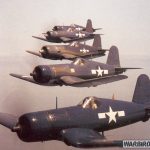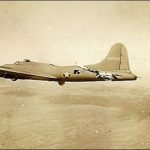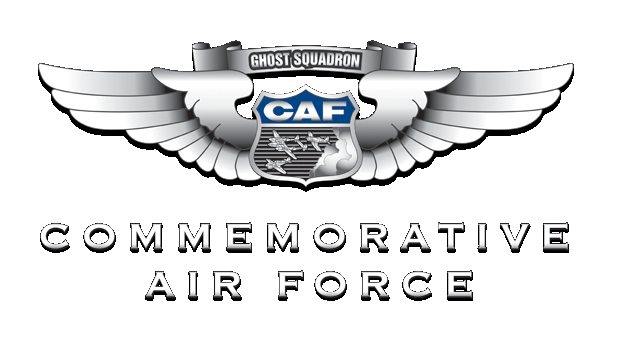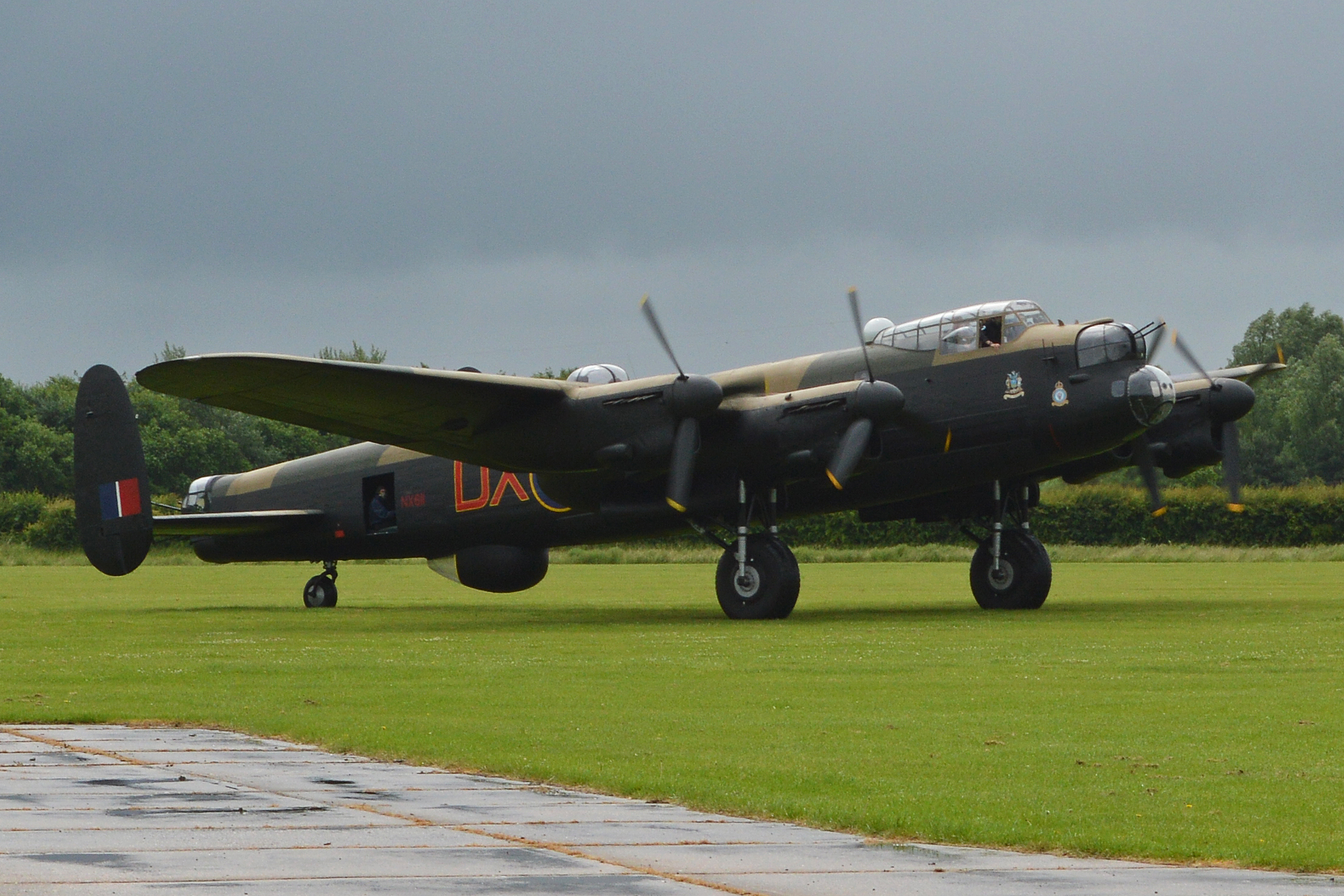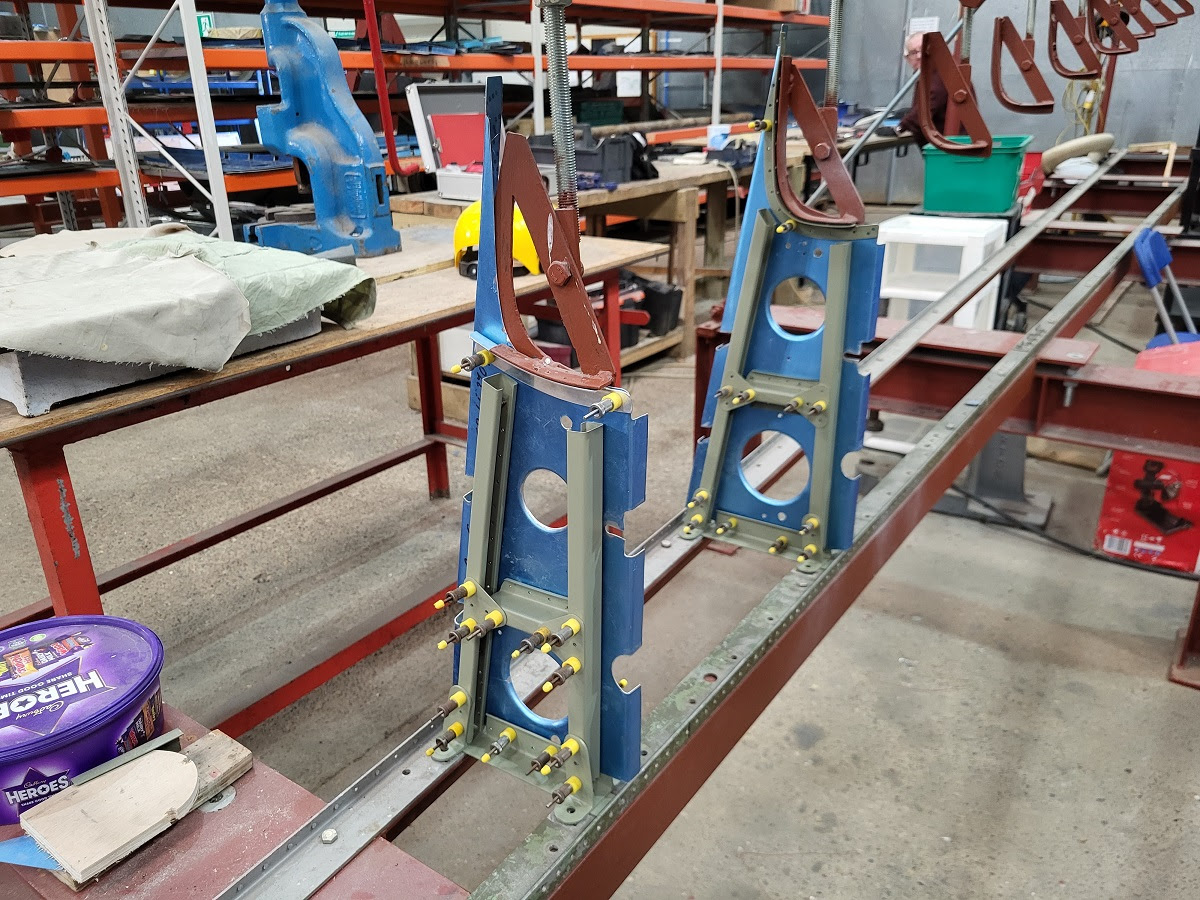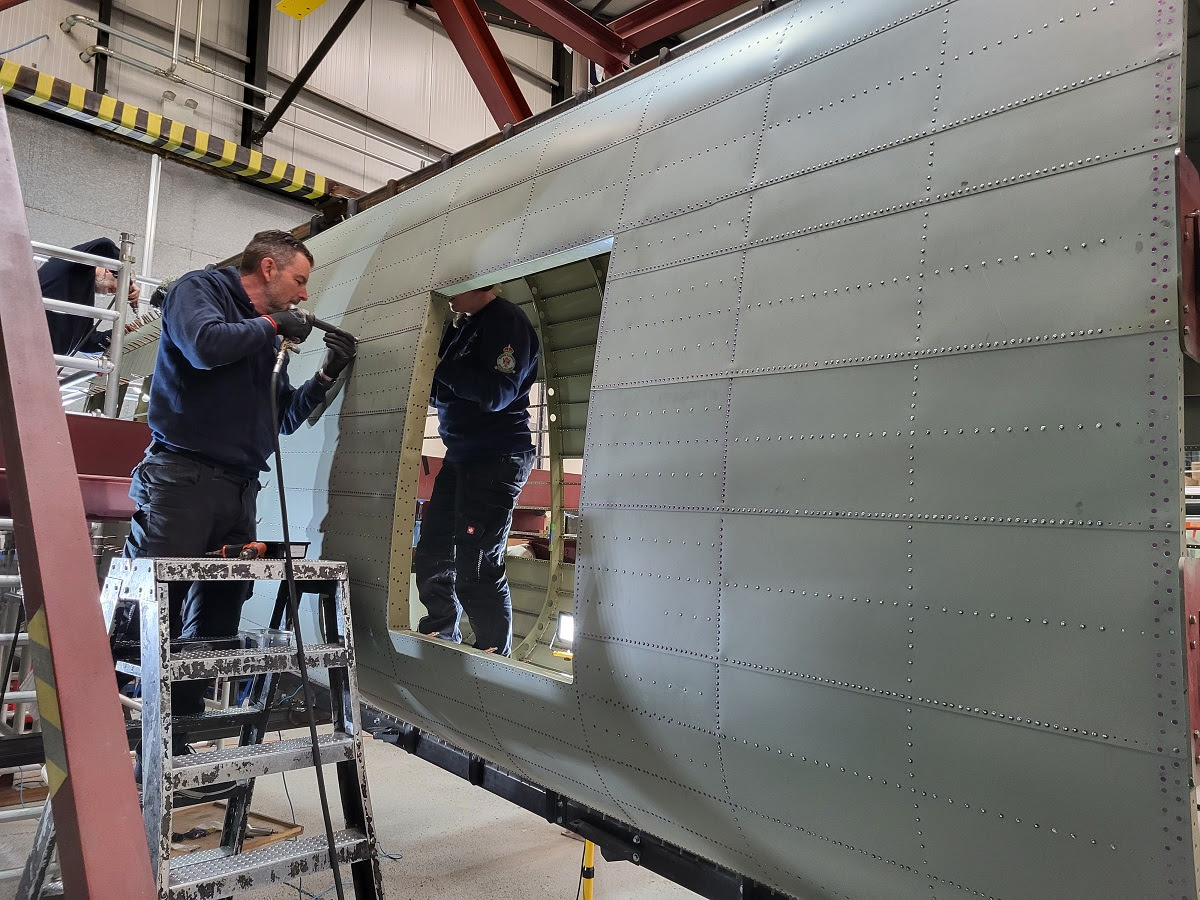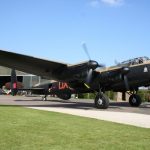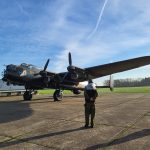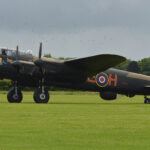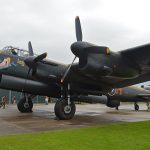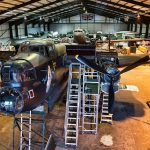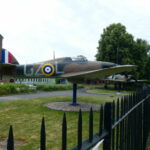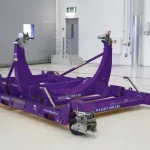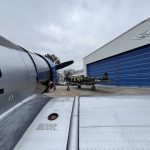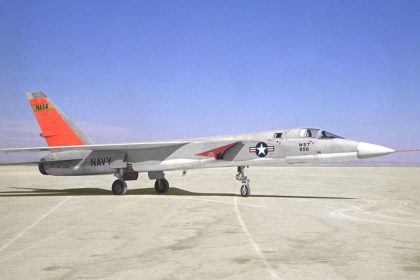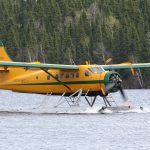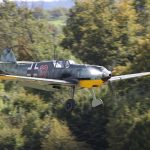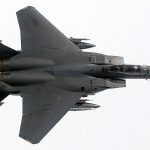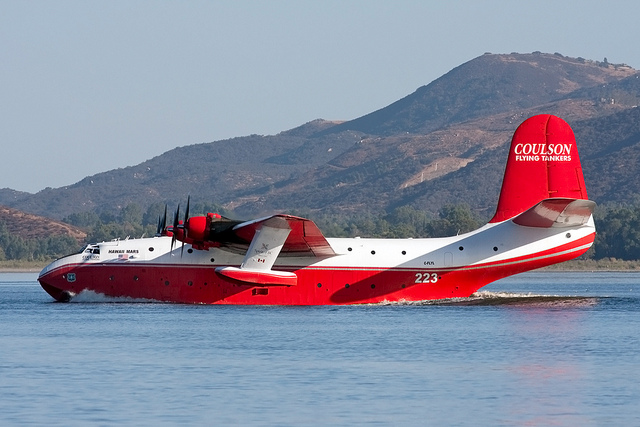As most of our readers will know, Avro Lancaster B.VII NX611 Just Jane is under restoration to airworthy condition with the Lincoln Aviation Heritage Center at former RAF East Kirkby in Lincolnshire, England. The group has made magnificent progress, even during the pandemic, and we thought that our readers might like to see a recent (edited) restoration update, reproduced here with permission. As the days grow longer and warmer, the team at the Lincolnshire Aviation Heritage Centre is preparing to roll out Avro Lancaster NX611 Just Jane for her pre-season taxi runs. Time is flying, and so is the progress on this iconic aircraft’s restoration. If you’d like to contribute and be a part of this historic restoration, you can do so via the THIS campaign link . Work continues at pace on the restoration of Avro Lancaster B.VII NX611 to airworthy condition, with notable progress made over the past two weeks across multiple areas of the aircraft.
Wing Rebuild
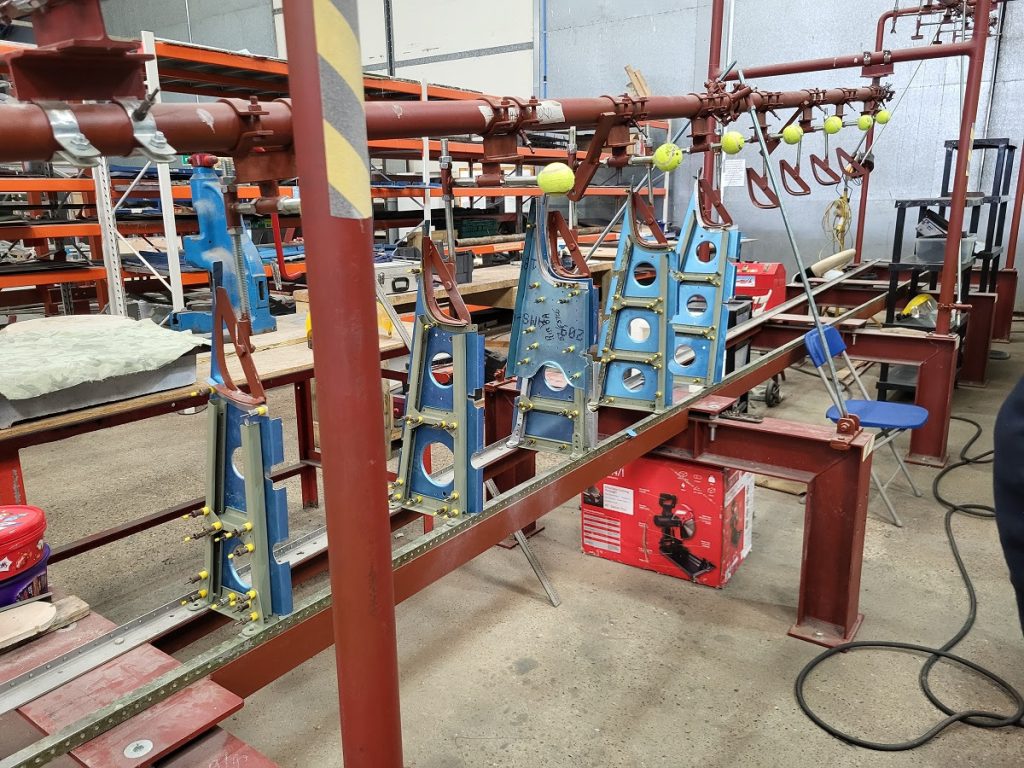
Chris and Dennis have been hard at work on the port wing’s trailing edge ribs. Using original extrusions, they’ve built up and trial-fitted the sheet ribs into the jig. Each rib has had its lightening holes drilled and flanged, and attachment holes copy-drilled from the original corroded examples. Once trial-fitting is complete, the ribs will be disassembled, painted, and reassembled for final construction. Meanwhile, John has commenced the reconstruction of the wing ribs from components returned from the paint shop—pinning together the extruded elements and skin sections in accordance with the drawings made during deconstruction.
Rear Fuselage and Tail Section

Dave and Jodie have continued the extensive riveting work around the rear fuselage, focusing on areas surrounding the access door—where overlapping skins had previously limited access. With that section complete, Dave trimmed the lower skin around the flare chute aperture. Terry and Norm have finished riveting the bulkheads fore and aft of the tail oleo box, enabling final prep for its installation. Additionally, they riveted the rear port fuselage skins, including the countersunk flush-riveted panels necessary for mounting the airflow-deflecting shroud around the rear turret.
Dave P has fabricated the glider tow attachment points, which will be painted and installed onto the tail oleo box in the coming weeks—marking another significant milestone toward completing the rear fuselage assembly.

Parts Recovery Effort
A team from the Centre recently travelled to a partner organisation to sort through a large stockpile of components, identifying and recovering Lancaster-specific parts. The first trip returned two van-loads of potentially usable parts now undergoing final identification and cataloguing, with several more visits planned.
North American B-25 Restoration
The B-25 team reached a milestone by successfully removing the first of the inboard rubber bag fuel tanks from the starboard wing. Unlike the aluminum tanks typically found in aircraft of this era, these rubber tanks have hardened over time, becoming brittle and unserviceable. Extracting the first tank took three days of careful manipulation due to its degraded condition. Encouragingly, the wing structure exposed beneath the tank is in excellent shape. The stress panel will now be reinstalled before removal begins on the next of the four tanks—each needing to be addressed individually due to structural stress considerations. The team is exploring replacement options with a specialist U.S. manufacturer.
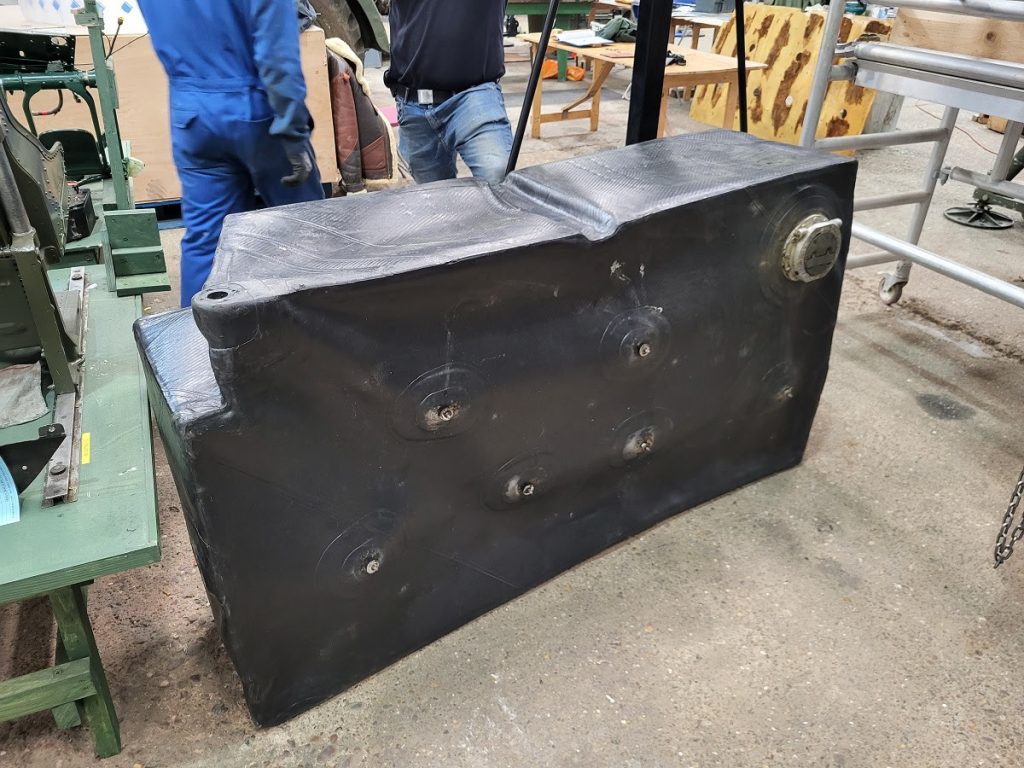
Fundraising Progress
The Wings Campaign on GoFundMe has now raised over £79,015 toward the £500,000 goal—critical funding for materials like jigs and aluminum. The team extends sincere thanks to all who have contributed. Donors giving over £50 will receive a commemorative Wings Fund badge.




